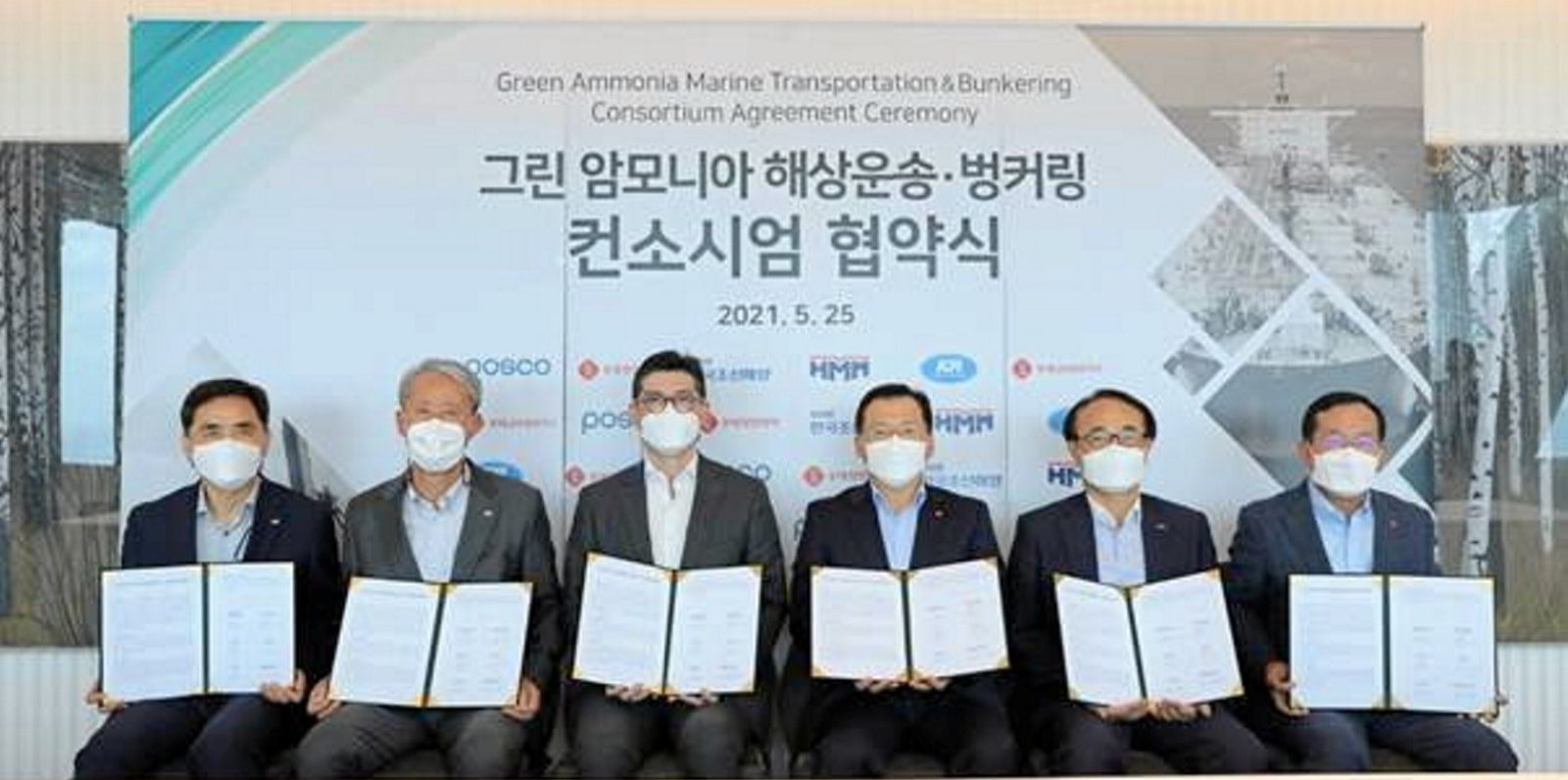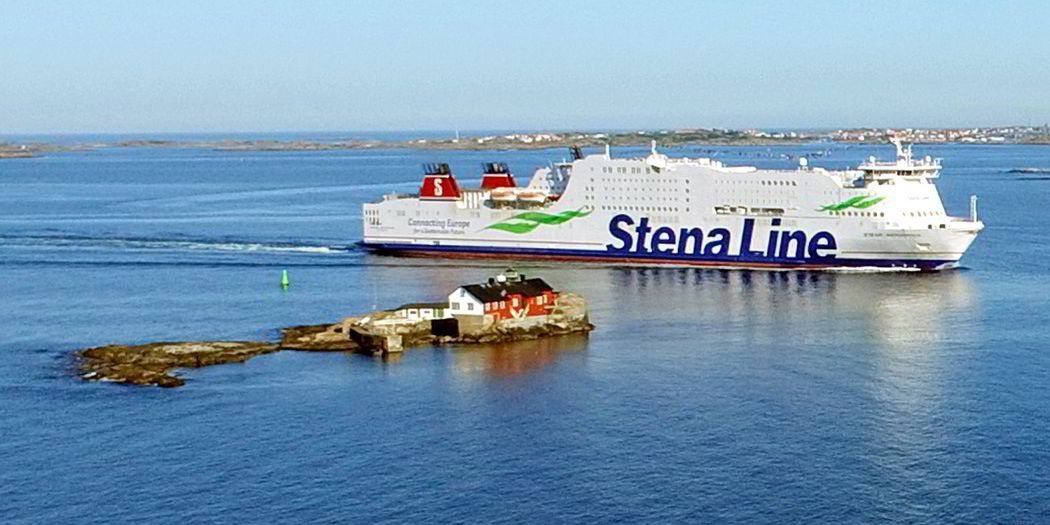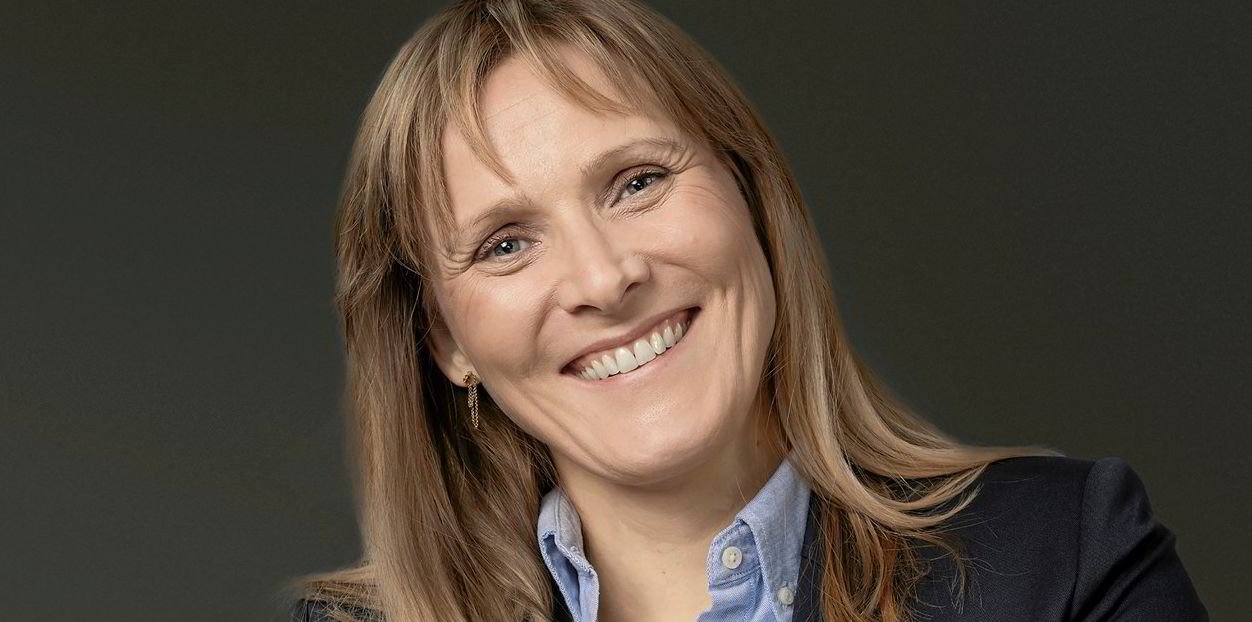South Korean shipowner HMM has established a new alliance to develop a "feasible" green ammonia supply chain for shipping.
The boxship and VLCC company has signed a memorandum of understanding with five domestic partners for the study.
The aim is to come up with a solution that covers production, storage, transport and bunkering of the fuel.
Participants include steel producer Posco, classification society Korean Register of Shipping and Korea Shipbuilding & Offshore Engineering (KSOE), the main shipyard unit of Hyundai Heavy Industries Holdings.
Lotte Fine Chemical and Lotte Global Logistics are also involved.
New ship coming
KSOE, which owns Hyundai Heavy Industries among other yards, plans to develop an ammonia-powered ship, which will be certified by Korean Register.
HMM and Lotte Global Logistics will take charge of testing and operating the vessel.
Posco plans to produce green ammonia overseas, while Lotte Fine Chemical will transport the fuel and perform bunkering operations.
A spokesman for HMM told TradeWinds: "The consortium is just launched, and we are currently at the very initial stage. The timescale for this consortium is not prescribed."
The company's own ammonia plans are similarly undecided.
"There are no specific or detailed results yet, but we will continue to study what we need to use ammonia as a viable alternative fuel with long-term vision," he said.
The shipowner has a target of reaching carbon neutrality by 2050 for its entire fleet.
Keeping options open
As part of achieving this, the company is examining multiple sustainable energy sources, including biofuels, LNG and hydrogen.
"We simply can’t decide and select one single carbon-neutral fuel at this moment, considering commercial viability, availability and scalability," an HMM official added.
"HMM will spearhead an effort to promote the use of a range of alternative fuels in cooperation with top-rated industrial players with experience and expertise."
The International Energy Agency (IEA) said earlier this month ammonia and hydrogen will be the main fuels in a zero-emissions scenario for shipping by 2050.
The agency said the two green fuels will account for 60% of the bunker market.
Ammonia alone will account for 45% of demand, the IEA added.
Pricey alternative?
Cost will be an issue, however.
The Korean Register has estimated that new green ammonia plants will produce the fuel at between $650 and $850 per tonne.
After that, the cost is expected to drop back to between $400 and $600 per tonne, as larger plants are built from 2030.
By 2040, the price could be between $275 and $450 per tonne as consumption increases.
The Rotterdam price for very low-sulphur fuel oil was around $480 per tonne this week.
But taking into account the lower energy intensity of ammonia — about 2.3 times — the fuel will remain more expensive. The 2040 price will be 1.7 times more costly, TradeWinds is told.
Ammonia engines are expected on the market in 2024.






